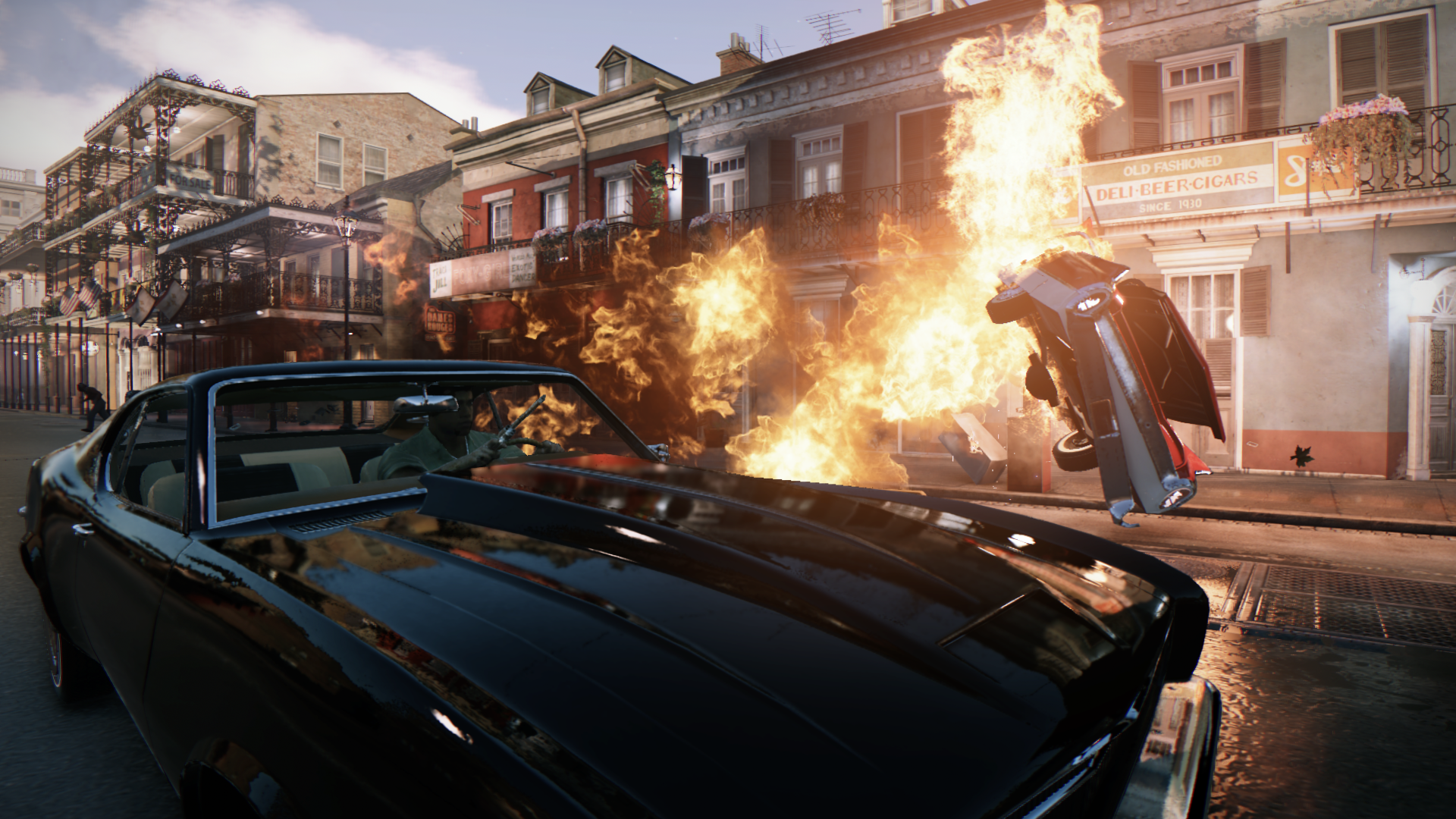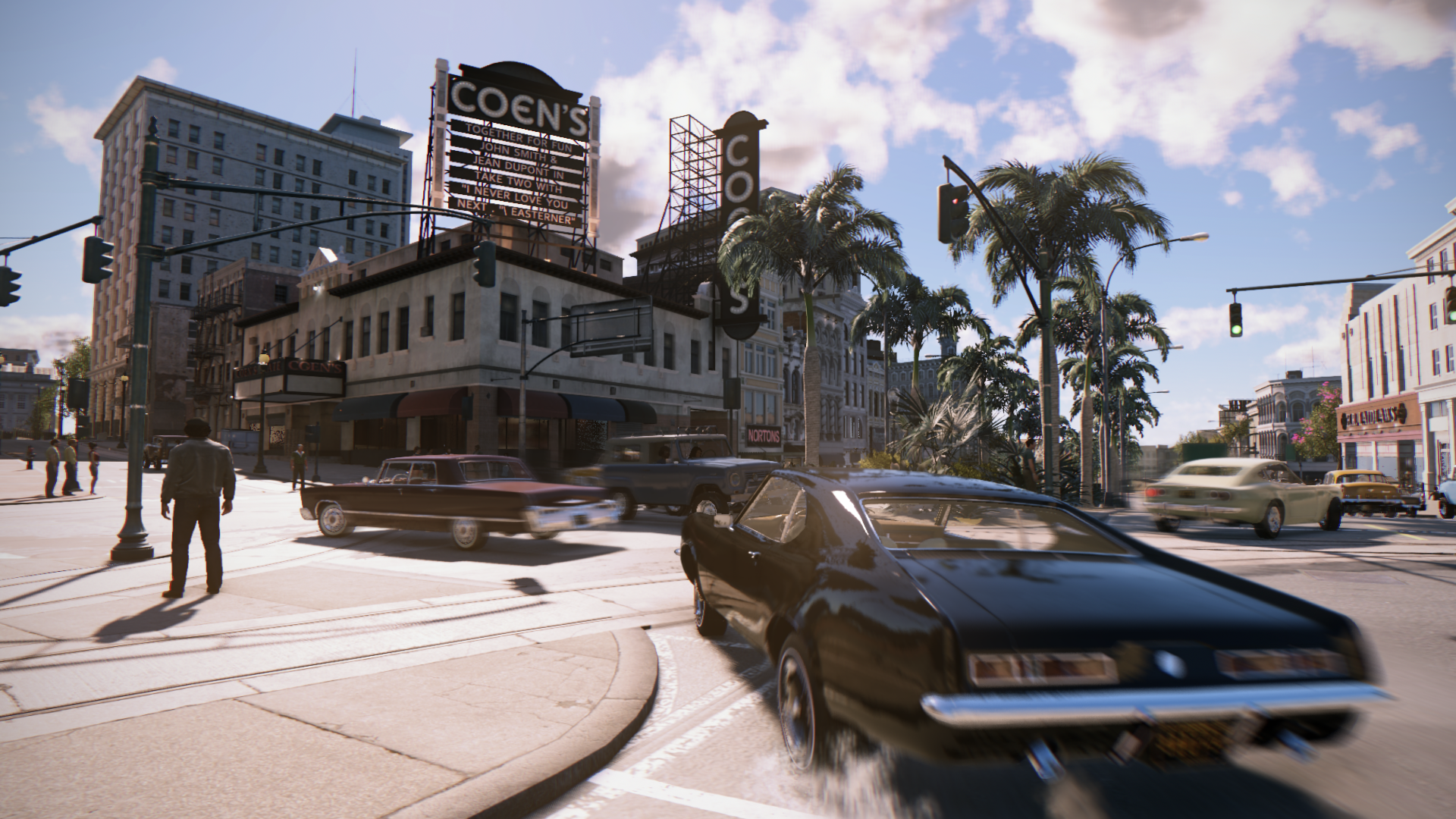Mafia 3: a violent tale of family in a sumptuous city

The life of an Italian mafioso has been well documented, in film and in games. There's a well-worn template for the rags-to-riches story of a young hopeful struggling with the internal wranglings of organised crime. Mafia 3 is different. It's set in a reimagined version of New Orleans in the late-'60s, and casts the Italian Mafia as the primary antagonists. You play as Lincoln Clay, a black Vietnam veteran who, on returning to the US, finds work with the black mob. It's here that Clay—an orphan—finds the family he's been searching for.
Mafia 3 isn't about Clay's rise. It's about what happens after his fall. His sense of belonging is cut short when his adoptive family are betrayed by the Italian mob. In Mafia 3, Clay is building his own family, and he's taking them to war against the Italians.
Mafia 3 isn't about Clay's rise. It's about what happens after his fall.
If the setting defies expectation, so too does what new developer Hangar 13 is doing with the Mafia template. Where past games have featured an open-world city as the backdrop to a linear campaign, Mafia 3 has what the developers call a "true open world." It's not yet clear how open or emergent it will be, but—in the press demo I was shown—I got to see how the city plays a part in Clay's war.
In the demo, Clay's mission is to take control of a Mafia-owned drug den. No easy task in its own right, but Clay doesn't yet know where it is. Following a tip that dealers are operating in a local cemetery, he pays a visit hoping to shake loose some information. On his way, I see New Orleans wrought in stuning detail. The excellent lighting creates a dark, smoky atmosphere punctuated by vibrant bursts of light from signs and store fronts. It looks humid, somehow, and feels totally different from the overly familiar aesthetic of New York or LA.

After some brief cover-based stealthing, Clay finds the dealers and transitions into some cover-based shooting—For all that it does do differently, Mafia 3 is still a third-person action game. The dealer runs, and the ensuing chase ends when Clay jumps in his car. Again, Mafia 3 doesn't reinvent the genre. Clay drives erratically to scare the dealer into revealing the location of his drug den. It's a familiar scenario, but one enhanced by Creedence Clearwater Revival's Fortunate Son playing on the radio.
What I hear of the demo's soundtrack is a best-of playlist of the era's most iconic songs. In the short presentation, I also catch The Rolling Stones, The Kinks and Sam & Dave. It feels dismissive to say that a game's music is one of its most exciting features, but the soundtrack works to highlight the sense of a specific time and place. Post-Vietnam New Orleans is packed with detail; everything from the cemetery's eclectic collection of burnouts and hippies, to the moment, earlier in the demo, where Clay is given the choice to intervene as a cop harasses a black man in the street. Mafia 3 is a crime story, but one that appears to be grounded in its period setting.
With the dealer successfully terrorised, Clay learns that the drug den is hidden under a nearby jazz club. He's given the option to kill or spare his new informant. "Can't trust a snitch," he states bluntly, before shooting the dealer in the head and kicking him from the car. Clay's predilection for violence is seen throughout the demo, most notably during the stealth section that leads to the underground den. The player will have the choice to enter in multiple ways: calling in muscle to storm the club, taking a boat into the underground water network, or—as I'm shown—sneaking around the back.
Keep up to date with the most important stories and the best deals, as picked by the PC Gamer team.

Reaching a thug undetected gives Clay the chance to perform an instant takedown. In this instance, that means taking a kitchen knife to the soon-to-be-ex guard's face and chest. I'm almost taken aback by the brutality. It will be interesting to learn more about Clay's motivations and see how this is framed in the full game.
Clay clears out the den with the help of a Magnum and shotgun. Both weapons feel powerful and impressive. A single shot won't necessarily kill an enemy, but it will incapacitate them—giving Clay the choice to move in for a melee takedown. After a lengthy shootout, the mob are relieved of their drug den.
Captured territory can be divvied up between Clay's three lieutenants, one of whom is Mafia 2's main character Vito. These characters play an important part of the story, but you can also use their special ablities in the open world. They can bribe cops, supply weapons and provide muscle. They also help to defend the territory they own against Mafia retaliation. The demo finishes as the Mafia sends some goons after Clay, which attracts the attention of the police. It culminates in an explosive firefight outside a cinema where Clay's grenade launcher makes short work of the cop cars.
Mafia 3 is one of the most promising new games being shown at Gamescom. I've still got a lot of questions, but I'm hopeful that its new developers know what they're doing. Hangar 13 has found a great way to rejuvenate the series, but it still feels like a Mafia game. We've seen the tale of the Italian Mafia told many times over. Now it's time to let someone else start a family.

Phil has been writing for PC Gamer for nearly a decade, starting out as a freelance writer covering everything from free games to MMOs. He eventually joined full-time as a news writer, before moving to the magazine to review immersive sims, RPGs and Hitman games. Now he leads PC Gamer's UK team, but still sometimes finds the time to write about his ongoing obsessions with Destiny 2, GTA Online and Apex Legends. When he's not levelling up battle passes, he's checking out the latest tactics game or dipping back into Guild Wars 2. He's largely responsible for the whole Tub Geralt thing, but still isn't sorry.

